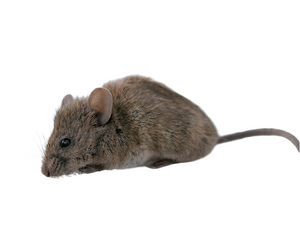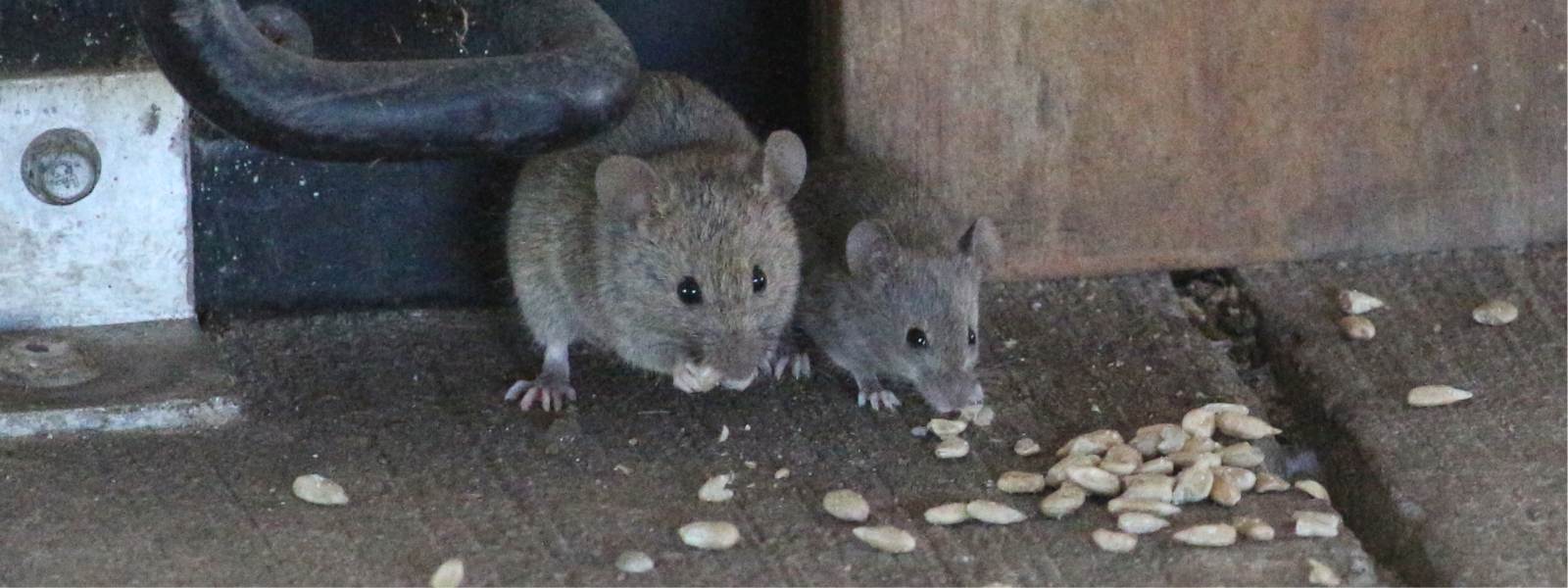How to Identify Mice
If you have a mouse problem, there’s a good chance you would not know it. The signs of a mouse in the house can be subtle, but their impact is not. Getting rid of a mouse usually involves more than a mousetrap. Chances are if you have one, you have many. A female mouse can produce a litter of eight every four weeks.

THE SIGNS OF Mice
The chances of you seeing a mouse are low unless you are a night owl. Mice are most active at night and they move fast. You are much more likely to see signs of a mouse in the house than you are to see the mouse itself.
Here’s what to look for:
Droppings
Mice excrement is about the size and shape of a grain of rice and is dark brown to black in color. Look for excrement in cabinets and cupboards, drawers, behind trash receptacles and along baseboards.
Urine Pools and Trails
Mice use urine to mark territory. You can sometimes see drops in a line pattern leading to a hiding place and also something called a “urinating pillar” which is a mound of debris including grease and dirt that is mixed with urine.
Nibble and Gnaw Marks
You might see evidence of chewing on boxes, bags and other food containers as mice try to get access to food. Pet food is a favorite, as is, believe it or not, soap. You might also see tooth marks on wood and sawdust nearby. A mouse may be trying to keep his teeth sharp.
Mouse Nests
Look for soft, fuzzy piles of material, paper or grass gathered into a pile. Mice will build cozy nests any place they can find a quiet place to hide, such as behind appliances, in walls, drawers, and cabinets that are rarely used. Nests can also be found in upholstered furniture, and even inside toasters and blender housings. Since a mouse can fit through an opening as big around as a pencil, you might be surprised where they end up.
You might hear a mouse stirring when your house is quiet at night, or scratching inside a wall. You might see dirt marks and smudges in areas where mice frequently scurry. Some people also report smelling an unusual musky odor.
Freaking Out Pets
Is your dog tracking something behind the trash can? Is your cat agitated and staring at something you can’t see? They might be onto something: maybe a mouse in your house!
THE RISKS OF MICE
The harm caused by house mice can be considerable. Mice cause damage to personal items, eat your food, leave food storage caches that rot and smell, chew through clothing and possessions, and leave urine trails and droppings that cause stains or permanently mar the wood.
Mice also attract other pests like fleas, ticks, and mites, along with the diseases and discomfort those pests bring.
Mice are notorious vectors for diseases and parasites. They helped the spread of the Bubonic Plague through Europe in the Middle Ages, and, though extremely rare (the Center for Disease Control reports only three cases of the disease in New York since 1993), mice carrying the Hantavirus have made headlines. Mice also produce an allergen to which children are especially susceptible.
Carry Diseases
Property Damage
Contaminate Food and Surfaces

Allergic Reactions
How WE KNOCK OUT mice
Before you try to get mice out of your house, you need to figure out how they are getting in. They can wiggle in through narrow spaces around pipes and wires. Any opening a quarter inch in diameter is big enough. It may take a professional inspection to determine how mice are entering and how to stop them.
The next step is taking action to get rid of them. Knowing the size of your problem is essential before you start. How many mice do you have? How long have you had them? Where are their nesting sites? It may be worth having an expert come to do an assessment, even if you plan to deal with the problem on your own.
We suggest a multi-prong approach. No single method is appropriate for every situation. The presence of children and pets make some baits and traps unsuitable. The degree of infestation makes some poisons more effective than others.
Some so-called humane methods turn out to be not humane or effective at all. Trapping and releasing a mouse may put that animal in the territory of another mouse that will kill and eat the intruder. Releasing a house mouse into a field also makes him an easy mark for a predator. Researchers have tracked mice swimming fast streams and crossing busy highways; traveling over four miles to return to their (your) home.
Mice are covered in our effective and affordable Integrated Pest Management Annual Package KO-12 Program that provides you with pest protection throughout the year.
Get Rid of Mice Fast
Call 1-800-244-PEST (1-800-244-7378)
We respond like every pest problem is an emergency with fast, 24 hour service seven days a week.


